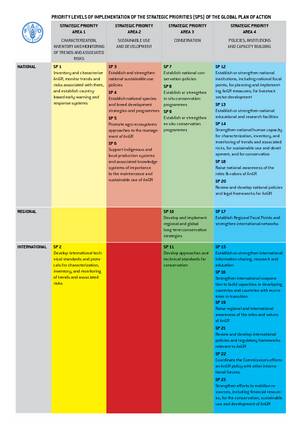Глобальный план действий
Animal genetic resources for food and agriculture provide crucial options for the sustainable development of livestock production and its adaptation to socio-economic and environmental challenges. The erosion of animal genetic resources worldwide has accelerated in recent years, particularly in developing countries, as a consequence of the rapid changes affecting livestock production systems. The Intensification and industrialization of the livestock sector has led to increased reliance on a narrow genetic base, mainly in response to a surging global demand for animal products. Animal disease outbreaks, climate change, the degradation of grazing lands, disasters and emergencies like armed conflicts and droughts, are other, often inter-related causes.
FAO's The State of the World's Animal Genetic Resources for Food and Agriculture (published in 2007) provided the first global assessment and analysis of the status and trends in animal genetic resources. It raised global awareness and understanding of their ongoing erosion. It also identified significant gaps in countries' capacities to manage animal genetic resources, particularly in the developing world.
Recognizing the global scale of the challenge and the need for countries to work together to find solutions, the international community adopted the Global Plan of Action for Animal Genetic Resources in September 2007, at the International Technical Conference on Animal Genetic Resources for Food and Agriculture. It includes 23 strategic priorities for action grouped into four priority areas: characterization and monitoring; sustainable use and development; conservation; and policies, institutions and capacity-building. In 2015, FAO published The Second Report on the State of the World's Animal Genetic Resources for Food and Agriculture, providing an opportunity to reflect on the need for any additional measures under the Global Plan of Action.
In 2017, the 16th Regular Session of the Commission on Genetic Resources for Food and Agriculture and the 40th FAO Conference reaffirmed the world's commitment to the Global Plan of Action.
FAO’s role
The main responsibility for implementing the Global Plan of Action lies with national governments. However, some strategic priorities are more suited for implementation at regional or international level. The following table illustrates the main levels at which each Strategic Priority is to be implemented.
Priority levels of implementation of the strategic priorities (SPs) of the Global Plan of Action.
FAO supports the implementation of the Global Plan of Action by facilitating global and regional collaboration and networks, supporting the convening of intergovernmental meetings, maintaining and developing the Domestic Animal Diversity Information System (DAD-IS), mobilizing donor resources, developing communication products, and coordinating the preparation of global status and trends reports. FAO also provides technical guidelines, as well as technical assistance and training to support the management of animal genetic resources at country level. FAO’s Commission on Genetic Resources for Food and Agriculture oversees, monitors and evaluates the implementation of the Global Plan of Action.
The Global Plan of Action is complemented by the Funding Strategy for the Implementation of the Global Plan of Action for Animal Genetic Resources, adopted in 2009, which aims to “enhance the availability, transparency, efficiency and effectiveness of the provision of substantial and additional financial resources, and to strengthen international cooperation to support and complement the efforts of developing countries and countries with economies in transition in the implementation of the Global Plan of Action”.


